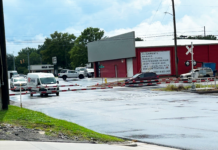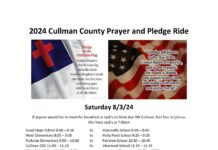With April being one of the months notorious for storms in Cullman’s history, it is good to know how to be prepared! There are several steps you can take to be prepared for tornadoes or other natural disasters.
Have an Emergency kit prepared and ready to go before the threat of severe weather. A basic emergency supply kit could include the following recommended items (recommended by www.ready.gov/basic-disaster-supplies-kit):
- Water, one gallon of water per person per day for at least three days
- Food, at least a three-day supply of non-perishable food
- Battery-powered or hand crank radio and a NOAA Weather Radio with tone alert and extra batteries for both
- Flashlight and extra batteries
- First aid kit
- Whistle to signal for help
- Dust mask to help filter contaminated air and plastic sheeting and duct tape to shelter-in-place
- Moist towelettes, garbage bags and plastic ties for personal sanitation
- Wrench or pliers to turn off utilities
- Manual can opener for food
- Local maps
- Cell phone with chargers, inverter or solar charger
A First Aid kit and knowledge of how to use all of the items in it including bandages, soap, non-prescription medications, medications you may take daily, antibiotic ointment, scissors and a few extras depending on your specific needs is helpful. A complete list and extras to bring for kids, pets, elderly and other circumstances is available at the www.ready.gov website.
These are just a few recommended basics that can comprise your emergency kit. There are more tips available to help customize your kit for specific needs such as kids, pets or businesses. A full list is available at http://www.ready.gov/basic-disaster-supplies-kit.
Planning ahead is another key step in being ready for severe weather. These are a few tips on places to avoid and where to seek shelter.
Identifying shelter locations and knowing where to go when natural disasters are predicted is key. An underground area, such as a basement or storm cellar, provides the best protection from a tornado. If an underground shelter is unavailable, consider the following:
- Seek a small interior room or hallway on the lowest floor possible.
- Stay away from doors, windows and outside walls.
- Stay in the center of the room and avoid corners because they attract debris.
- Rooms constructed with reinforced concrete, brick or block with no windows and a heavy concrete floor or roof system overhead is preferred.
Avoid auditoriums, cafeterias and gymnasiums that have flat, wide-span roofs.
Personnel should also be aware of what to do if caught outdoors when a tornado is threatening. Seek shelter in a basement or a sturdy building. If one is not within walking distance, try to drive in a vehicle, using a seatbelt, to the nearest shelter. If flying debris is encountered while in a vehicle, there are two options: 1) staying in the vehicle with the seatbelt on, keeping your head below the windows and covering it with your hands or a blanket, 2) if there is an area which is noticeably lower than the roadway, lie in that area and cover your head with your hands.
There are several resources to prepare for severe weather and plan for whatever accommodations you need for your situation.



























